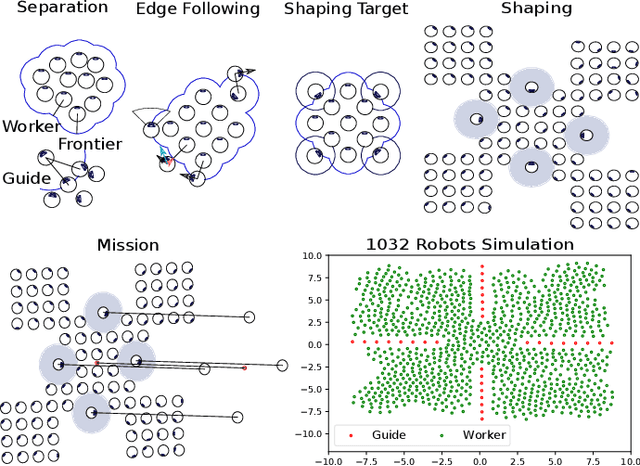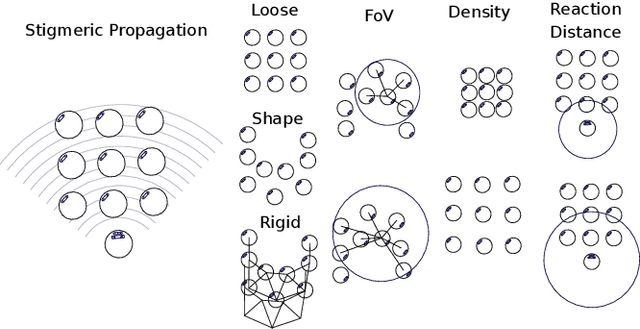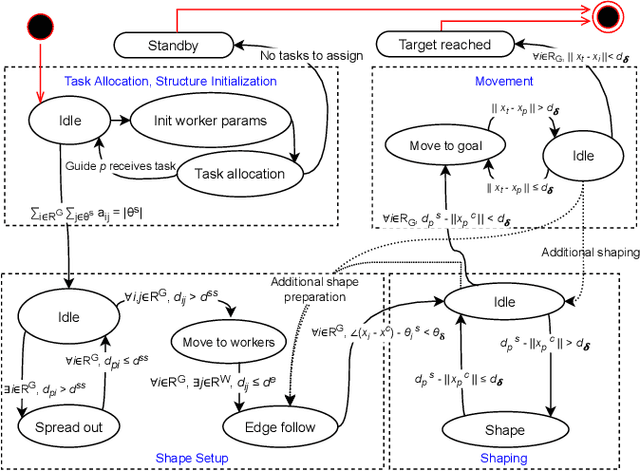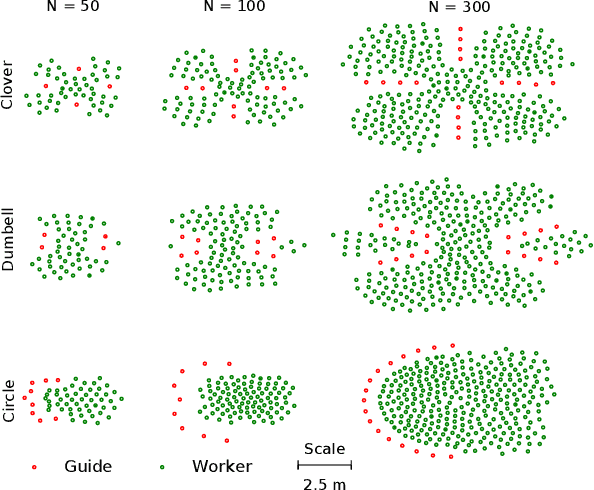Hierarchical Control of Smart Particle Swarms
Paper and Code
Apr 14, 2022



We present a method for the control of robot swarms which allows the shaping and the translation of patterns of simple robots ("smart particles"), using two types of devices. These two types represent a hierarchy: a larger group of simple, oblivious robots (which we call the workers) that is governed by simple local attraction forces, and a smaller group (the guides) with sufficient mission knowledge to create and maintain a desired pattern by operating on the local forces of the former. This framework exploits the knowledge of the guides, which coordinate to shape the workers like smart particles by changing their interaction parameters. We study the approach with a large scale simulation experiment in a physics based simulator with up to 1000 robots forming three different patterns. Our experiments reveal that the approach scales well with increasing robot numbers, and presents little pattern distortion for a set of target moving shapes. We evaluate the approach on a physical swarm of robots that use visual inertial odometry to compute their relative positions and obtain results that are comparable with simulation. This work lays foundation for designing and coordinating configurable smart particles, with applications in smart materials and nanomedicine.
 Add to Chrome
Add to Chrome Add to Firefox
Add to Firefox Add to Edge
Add to Edge